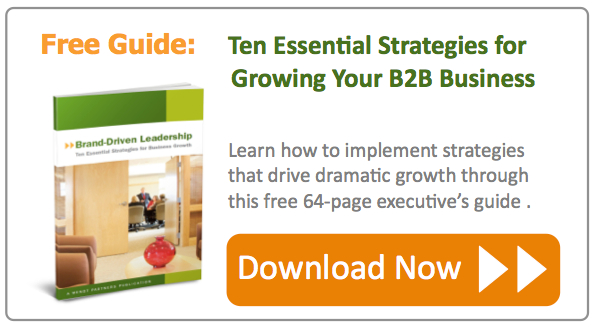Doug Wendt is a co-founder and senior partner with Wendt Partners.
 If you’re between the ages of 51 and 71 right now, congratulations - you’re a member of the Baby Boomer generation. And if the title on your business card says CEO, President, Owner, Principal or Senior Partner, congratulations – you’re a BBO… a Boomer Business Owner. BBOs own nearly 70% of all businesses with employees, which totals nearly 4 million enterprises in the United States.
If you’re between the ages of 51 and 71 right now, congratulations - you’re a member of the Baby Boomer generation. And if the title on your business card says CEO, President, Owner, Principal or Senior Partner, congratulations – you’re a BBO… a Boomer Business Owner. BBOs own nearly 70% of all businesses with employees, which totals nearly 4 million enterprises in the United States.
The Crisis Facing Boomer Business Owners
Unfortunately, this means that you face a very unique challenge. Thanks to advances in healthcare, an ongoing post-recession economy and the overwhelming wipe-out of wealth during the 2007-08 economic crisis, chances are you are a BBO with a problem.
If you do the math, it’s simple to see: Boomers are thinking they are ready to retire at 60 or 65; they will often live to 85 or even 90; they generally expect to maintain a very well-off lifestyle; and they have less money saved for retirement than their Greatest Generation predecessors.
Earlier Retirement + Longer Lifespan +
Higher Lifestyle + Lower Savings = Crisis
According to The New York Times, the crisis is not just due to poor retirement planning or under-saving. It is also exacerbated by this generation’s discomfort with aging and desire to live an ‘active’ retirement, which often translates for BBOs into making little to no effort toward creating an exit strategy for the business. Put another way, BBOs often feel vibrant today, so the last thing they want to do is plan for a less-vibrant tomorrow.
As a result, BBOs are indeed selling their businesses in droves - but often for far less than they should; and in many cases for much less than they will need. Further exacerbating this is the sheer number of boomers selling businesses at the same time.
If you look around at your industry and see that nearly all of your competitors are companies run by other BBOs, then the problem becomes instantly clear. How much can you expect to make when you sell your company at the same time that everyone else in your industry decides to sell theirs? It’s the equivalent of expecting top-dollar for your house while everyone else on your street also plans to sell their house for the highest possible price..all at the same time.
As a result, BBOs have a very serious decision facing them: To grow… or to go. Notice we didn’t say “to stay or to sell”. That’s because going doesn’t necessarily mean selling.
Instead, going might mean simply shutting the business down and moving on to do something else (often returning to the workforce). It might mean handing the business over to a future owner through a transaction that will delay cash benefit to the BBO for years. Or, it might mean shutting down the actual business and selling its assets (assuming there are any).
In summary, it’s the market that decides whether you can effectively sell your business. All you can do is decide whether to grow…or go.
The Risks of Retiring in Place
One thing many BBOs are doing in response to this crisis is “retiring in place”. For a business owner, retiring in place means staying on as the business owner and top executive; continuing to take a salary, distributions and other business benefits (like the company car, tax deductions for ‘business’ trips, etc.); and just gradually dis-engaging from actually running the company anyway.
You know what this looks like: Instead of coming to the office, you take every Monday off (and let the COO run management meetings). On Fridays, you take longstanding customers of the company out for golf, but in reality those customers are really lifelong personal friends and the business benefits of the session are virtually non-existent. You take long weekends more frequently, and arrange two hastily-scheduled trips of three weeks in a row each to take your youngest child on trips to visit colleges.
In short, you maintain the controls of being the chief executive and you keep collecting the pay that comes with the job. But you’ve really checked out, and frankly, you don’t honestly care what happens with the company’s day-to-day operations anymore...just so long as nothing blows up or burns down.
The temptation to do this is strong. After all, the company often provides you with much stronger near-term financial stability if you remain inside it. Once you leave, you might collect some cash but the ongoing benefits of the business as a revenue-generating machine to fund your lifestyle are forever removed.
Retiring in place, however, does three things: It de-motivates your employees; it leads to stagnant growth or, often, revenue losses; and it destroys the value of your business when you do eventually go to sell it. That’s because the company still can’t run without you…but you also don’t have it prepared to run with anyone else at the helm, either.
So, if you want to deplete your future savings, depress and de-motivate your hard-working employees, disconnect your revenue generation machine and slowly destroy your business, by all means go ahead and stay past your personal ‘expires by’ date.
If that doesn’t sound like a very appealing future to you, then it’s time to seriously examine your options as a BBO. Here are three strategies worth considering:
Option One: Invest in Growth
The first strategy is to invest in growth. If your operations are well in-hand and if you believe there are additional market opportunities to be had, then this may be the most appropriate option. That’s because a company with a positive revenue growth trajectory is far more likely to receive a positive valuation at exit. Typically, a company that can increase revenues by 50% or more over a 3-5 year period can see dramatic increases in valuation.
That’s because the core equation for business valuation (V = P x M) recognizes today’s profit *and* tomorrow’s future profit potential. Put a different way - if you can increase revenue (and keep costs in line), you can get double the benefit from that growth when you exit. There are three essential requirements to this approach:
- Time
- Involvement
- Investment
The time required to achieve a meaningful movement in the revenue growth needle for most mature B2B companies is 3-5 years, and in today’s marketplace, the CEO must be actively involved in order for this to work. That’s in part because technology and competition demand that companies become far more agile by integrating sales and marketing; targeting more precise market opportunities; and launching new products and services.
The other key to driving significant revenue growth is investment. If you’re running at $7M company and you want to get it to $10M in the next three years, you need to be ready to invest at least $1M of new funds into the effort, plus additional re-investment of profits generated from the revenue growth during that timeframe.
If 3-5 years, active involvement and meaningful new investment are ingredients you can provide in order to achieve a much stronger valuation when you do exit, then the “Invest in Growth” option is for you.
Option Two: Prepare to Go
On the other hand, if your timeline is three years or less; your exhaustion and frustration with running the business is irreversible; your revenues have been generally trending up or at least staying steady; and you aren’t concerned about what you get when you sell (even if you should be), then it’s time to get serious about preparing to go.
At this point, you should be meeting with a business valuation advisor and shifting your focus to shoring up internal operations exclusively. Get your management team engaged in documenting and systematizing your business processes. Replace outdated client-server software with easier-to-maintain cloud applications. Clean up your customer list and production order backlog. Actually empower your #2 and #3 employees to make major business decisions (but don’t just walk out the door and hand them the keys).
Even if all you do is get your company’s house in order, that will still position you in a much stronger place than many of your competitors when you go to sell, if only because they couldn’t be bothered to do the same.
You won’t get top dollar when you do exit, but you will should be in a much better place to receive a fair valuation and make a meaningful case for the value of the business to potential acquirers.
Option Three: Own But Don’t Lead
There is a third option, and that is to own but not lead. The challenge here is that you will have to give up the salary and many of the perks that come with officially continuing your company’s chief executive (this is because you will need that money to fund this strategy). But you can remain as the primary (or exclusive) equity-holder if you are willing to sacrifice short-term personal earnings for long-term financial results.
The most common approach here is to hire a dedicated CEO to replace you (either on a straight salary, a consulting retainer, or a combination of compensation plus bonus at exit). The second most common approach here is to transition a COO or CFO into the CEO position. The greatest challenge is that 9 out of 10 business owners will fail at this transition while they still own the business. The psychological shift from being leader to being mere shareholder is often simply too great to manage effectively.
Nonetheless, if you can set your personal feelings and personality quirks aside, this can be an outstanding option. When properly compensated and empowered, a third-party CEO hired specifically to take the company through this final period while still under your ownership can solve two problems. She or he will delay your ownership departure until the time is right, while at the same time either shoring up the operations or (if provided with proper funding and support), driving new revenue growth as well.
A modified version of this solution is to hire a Chief Growth Officer (CGO) who is most often a fractional, outsourced hire. In this model, you stay in the CEO role (rather than completely stepping aside) but you focus on improving and systematizing operations while the CGO is empowered to oversee new strategies and the enhancement of sales and marketing to deliver new revenue streams.
The Most Important Decision is to Make a Decision
No matter which option you choose, one thing is clear. Making a definitive, clearly communicated decision is far better than making no decision at all.
Remember, “retiring in place” is often the most efficient ticket to financial ruin, for you and for your business. Instead of being paralyzed by confusion, work with a trusted advisor to achieve clarity about your business objectives, as well as your personal state-of-mind.
By being proactive as a forward-thinking BBO, you can sidestep the worst of the boomer exit crisis and leave both your company and your post-business life in a far better position to create the legacy you truly desire.
Image Credit: quinnanya (Flickr @ Creative Commons)







